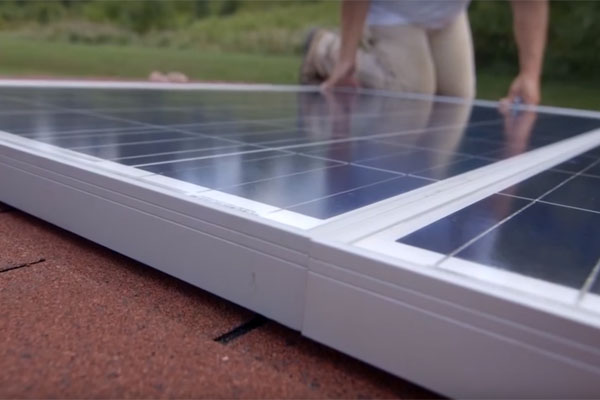Solar energy was the leading source of new power generation capacity in 2016. Falling prices, technology advances, and supportive policies are fueling rapid solar energy development throughout the globe.
Advancements in the efficiency of solar panels help to fuel this growth. Solar energy conversion efficiency improvements make it possible to generate more electricity in less space. This is especially important in urban areas where the limited roof and yard space can dictate the generation capacity of the system.
According to EnergySage, solar is responsible for generating 85 percent of a solar household’s total electricity in 2015. This achievement wouldn’t be possible without recent advances in solar system efficiency.
Likewise, advances in panel efficiency also boost the return on investment of the system. The more energy the array generates, the more value it provides. In addition, the price per watt of a solar system typically falls a bit with larger solar systems because solar systems have certain fixed costs.
As the return on investment of solar systems increases, it fuels greater solar energy deployment. As production increases, the price of solar panels and equipment tends to fall, encouraging more solar deployment.
Let’s explore how advances in solar energy technology are boosting solar efficiency.
Solar panel efficiency climbs
There is a solar cell design that is being touted as having a 50 percent energy-conversion efficiency in laboratory tests. Although this and other new technologies are promising, they may not be widely installed on rooftops.
Unfortunately, the super-efficient solar cells typically require more costly materials which often makes them not cost effective for consumers.
Meanwhile, SolarCity is mass-producing solar panels with 22 percent efficiency, increasing the options of efficient solar panels available to consumers. Although 22 percent may not sound especially impressive, it is when considering efficiency in a historical context.
In addition to increases in efficiency, some panels are more shade tolerant than others, but all solar panels perform better when unshaded. Shade-tolerant panels are especially helpful for properties with trees or other obstructions, although panel location and orientation are still very important for maximizing system output.
Solar inverters mitigate the effects of shading
Inverters convert the direct current (DC) electricity from the solar panels to alternating current (AC) electricity that is used by household appliances and electronics. Choosing the right inverter for your roof can have an impact of 20 percent or more on overall solar system output.
String inverters convert power from multiple panels on the same string while microinverters convert energy from just one panel. If a system with a string inverter is shaded, it can experience the “Christmas tree effect,” where the output of the entire array is disproportionately affected.
For example, if shade from a chimney is falling on a small segment of one panel, it can have a dramatic and disproportionate effect on the total system output.
String inverters with Maximum Power Point (MPP) tracking can overcome this challenge with smart inverter technology that adjusts accordingly to maximize power output under all circumstances. Power optimizers allow MPP tracking for individual solar panels, boosting the energy harvest of the total array.
Microinverters allow each panel to operate individually, avoiding some of the performance issues that plague string inverters without MPP tracking capabilities.
















Comments